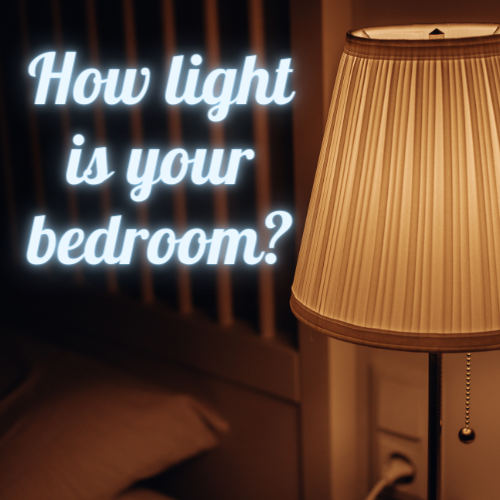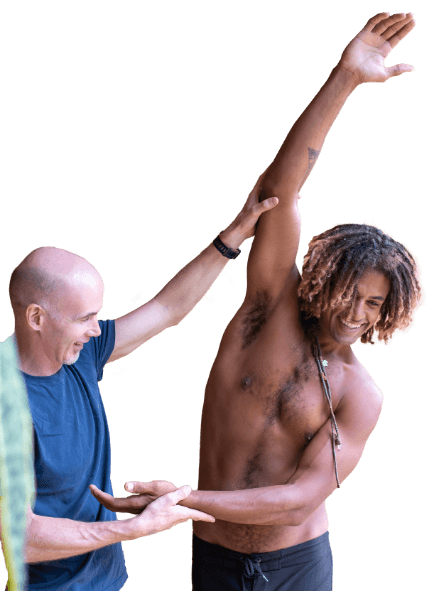
Exposure to artificial light at night is almost globally endemic, particularly in industrialized countries. We have evolved to be very sensitive to a diurnal pattern of light and dark. This rhythm plays a vital role in timing many behaviors and physiological functions. We are now beginning to understand more about how exposure to light in the evening and night can harm human health and well-being.
Emerging evidence indicates that light exposure plays a role in human metabolic regulation, with evening light exposure messing with a finely tuned system, including decreased glucose tolerance and insulin sensitivity (1, 2). In line with this, blue-enriched light exposure in the morning and evening has been shown to lower glucose metabolism, increasing insulin resistance compared to dim light exposure (3).
What may be surprising to some is that data from a recent study noted that, compared to no light exposure during sleep, any self-reported artificial light exposure in the bedroom during sleep (small nightlight in the room, light from outside space, or television/light in room) adds to obesity in women (4). Obesity was highest in those who reported sleeping with television or light on in the bedroom. These findings suggest that light in the bedroom during nighttime sleep may negatively influence metabolic regulation. I don’t like sleeping in a room with LED lights all night, and I’m constantly unplugging things in hotel rooms or at friends’ houses.
Night time light exposure also appears to have a direct effect on glucose regulation independent of sleep loss, as a study that subjected healthy male individuals to sleep deprivation in the dark or sleep deprivation with night time light exposure (5). This study showed that a whole night of sleep deprivation with nighttime light exposure increased levels of insulin and glucagon-like peptide-1, increased insulin resistance, and reduced nighttime melatonin; these changes did not occur under conditions of sleep deprivation in darkness. So those all-nighters you pulled when you were young or may still do now really affected you!
How light is your bedroom?
We all know it is hard to sleep when the lights are on. This study (6) suggests that even having some ambient light in the bedroom at night can be bad for us.
The study tested the hypothesis that acute exposure to light during nighttime sleep adversely affects next-morning glucose homeostasis and whether this effect occurs via reduced sleep quality, melatonin suppression, or sympathetic nervous system (SNS) activation during sleep.
A total of 20 young adults participated in this parallel-group study design. The light room condition included one night of sleep in dim light (<3 lx) followed by one night of sleep with overhead room lighting (100 lx). The dark light condition included two consecutive nights of sleep in dim light.
Measures of insulin resistance were higher in the light room versus dim light room, and Melatonin levels were similar in both situations. The heart rate was higher in the light condition, and the heart rate variability was lower (higher sympathovagal balance) during sleep compared to the dim light condition.
The primary finding of this study is that exposure to a single night of light in your room (100 lx) during sleep can increase measures of insulin resistance the following day.
A proposed mechanism to explain the change in glucose metabolism from nighttime light exposure is via light-induced changes to a phase shift of the melatonin rhythm (7).
A phase shift occurs when the body delays the production of a hormone called melatonin. For example, when you travel through a time zone, the body has to shift its hormone production to match the day-night cycle. However, if there is light in the room at night, the body doesn’t get a clear picture of what precisely the day-night process is where you are.
The association between altered melatonin levels and alterations in glucose regulation may be explained by evidence that melatonin plays a role in the secretion and action of insulin, it’s an important hormone, and we need it to be released at the correct times!
It’s been shown that light exposure, even of moderate intensity, while you are sleeping can produce a phase shift in the internal circadian system. This change in the ‘central clock’ of the body could lead to a misalignment between the central clock and peripheral clocks in metabolic tissues, with consequent problems regulating glucose.
Could the increase in light at night be a factor in the increasing levels of abdominal obesity, insulin‐resistant glucose metabolism, dyslipidemia, and increased blood pressure? I think so.
Therefore, it’s possible that making our bedroom darker could be a cheap and easy tool to use in the fight against heart disease.
I always try and get my room as dark as possible to limit the effect of light exposure on my sleep, and I would highly recommend it to others. I track my Heart Rate Variability, Heart rate, and many other metrics with my Whoop. This simple device measures my nighttime recovery, and I’ve noticed that it is poor when I sleep in a light room (while traveling) compared to black-out rooms!

Over the last 10 years Ed has been building a YouTube library to help people manage their own pain or movement limitations and increase performance through exercise. He regularly adds videos so be sure to subscribe and visit regularly


"Oh My Gosh- I am ALREADY feeling relief after a few days! I used to wake up 2-3 times a night with shooting pain that anti inflammatories couldn't touch. Now I have been waking up just because I want to notice what it feels like to lay in bed pain free- THANK YOU!."

"When I first started with your program I was experience a lot of pain. Walking was difficult. I had to stop and catch my breath every few minutes and lean against a wall for support. Now when I walk with my husband we go for over an hour. I never had to sit down and stop...and, hardly any pain!!! 😊😊 I can’t thank you enough."
Frustrated that you aren't recovering fast enough?
Discover how to heal from illness and injury using movement, food and lifestyle.